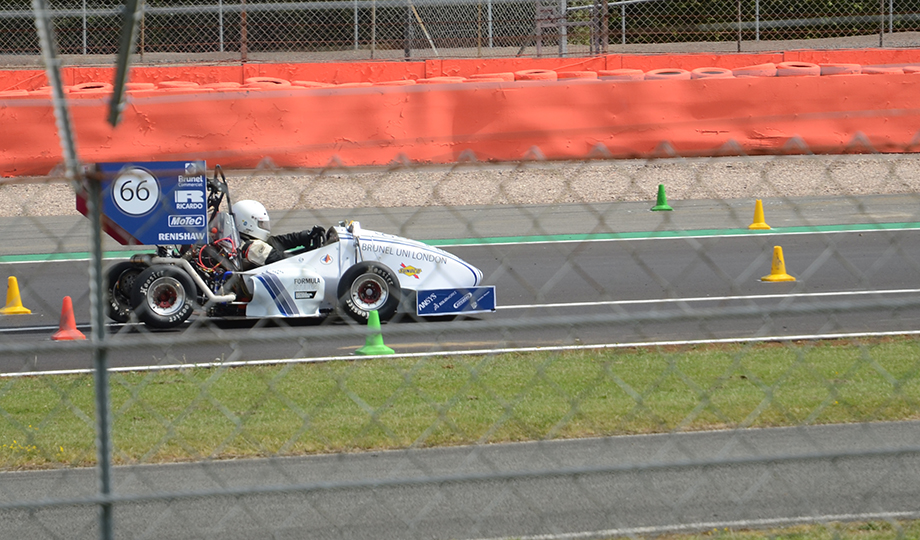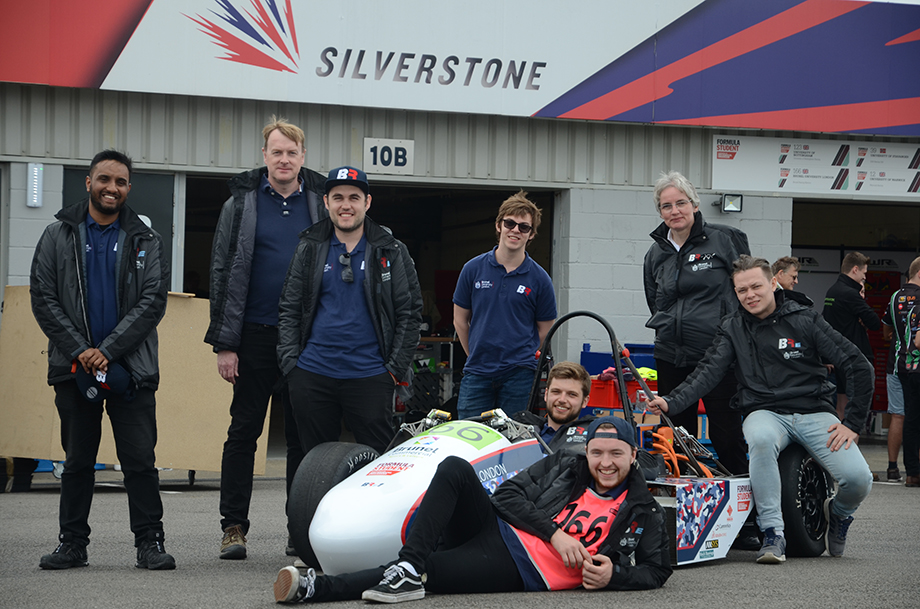Brunel Racing’s Class 1 petrol car stormed to 15th position overall after an intense weekend of testing at this year’s Formula Student event at Silverstone.
The team, which this year celebrated its 20th anniversary, looked to be heading for the top five in the Class 1 competition after they ranked near the top of the leader board in each of the ‘dynamic events,’ but a tiny split in the fuel pipe during an endurance test ultimately sealed the team's position.
Formula Student is an annual event from the Institute of Mechanical Engineers which challenges teams from all over the world to produce a prototype single-seat race car and present it to a hypothetical manufacturing firm. This year, over 100 teams took part, racing both electric and petrol-powered cars.

The petrol car in action on the track
“Formula Student UK was a great event – we were really pleased with how the team and the car performed,” said engineering student Jack Chamberlain, who led the petrol team.
“We managed to achieve top ten in all of the 'dynamic' events, however we had a fuel pressure failure in the endurance event or we could have been looking towards the top five overall – we were unlucky, but the car’s potential and improvement was really evident. The car was very quick on raw speed and the engine was performing very well.”
The petrol team, whose cars must be powered by a combustion engine, entered both the Class 1 and Class 2 events, finishing 9th overall in the Class 2 event and 5th out of the British teams.
The Class 1 competition requires a car to be designed with a full business case, manufactured, and tested over a series of ‘static’ events, such a brake and noise testing, and ‘dynamic’ events, such as an acceleration test and fuel economy test.
Meanwhile, the Class 2 competition covers engineering design, cost and manufacturing, and often features cars with prototype parts.
Despite significant engineering challenges, Chamberlain said the toughest challenge his team face was the scrutineering – making sure the car met the competition’s stringent rules and regulations.
“It is hard to build one of these cars from scratch in nine months and ensure it correctly meet all the rules and safety regulations,” said Chamberlain, who believes next year’s team should focus on refining the car and upgrading its aerodynamics.
“However, the scrutineering went well this year and we managed to get past relatively quickly, even if a few quick major fixes and late nights were required!”

Brunel Racing's electric team made their Silverstone debut
This year also saw the debut of Brunel Racing’s Class 1 electric car, which whilst not yet race-ready, was entered into the static events for feedback and testing, finishing 65th overall.
Leading the electric team, Harold Richardson said the biggest challenge his team faced this year was one that is unique to electric cars – fitting all of the batteries in.
“To quote our Electrical Storage System lead, it was like fitting a size 10 foot in a size 9 shoe!” said Richardson, who was using the chassis of the BR-XV – the petrol team’s 2014 car – as his base.
“In addition to this, a significant challenge has been developing so much of the vehicle effectively from scratch with such a small team.
“The feedback on the car so far was generally positive though, with the scrutineers pleased with our HV cabling, wiring and battery module design. We also got a lot of useful critique and advice to pass on to next year's team.”
For further information on Brunel Racing, please visit https://www.brunelracing.com/
Reported by:
Tim Pilgrim,
Media Relations
+44 (0)1895 268965
tim.pilgrim@brunel.ac.uk